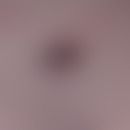Hierfür ist eine Anmeldung erforderlich. Bitte registrieren Sie sich bei uns oder melden Sie sich mit Ihren Zugangsdaten an.
HistoryThis section has been translated automatically.
Garrod, 1893
DefinitionThis section has been translated automatically.
Chewing caused callus-like thickening (reactive fibromatosis) over the back of the fingers.
You might also be interested in
EtiopathogenesisThis section has been translated automatically.
Tic-like chewing, sucking, sucking, pulling, rubbing the backs of the fingers. Signs of anxiety. Girls with bulimia have the calluses on the proximal base joints by pressing against the upper row of teeth during forced vomiting.
ManifestationThis section has been translated automatically.
Occurs in children, more often in girls than in boys.
LocalizationThis section has been translated automatically.
Mostly symmetrical on the back of the fingers, especially the 4th to 5th fingers.
ClinicThis section has been translated automatically.
Slowly developing, symptom-free, spindle-shaped thickening of the fingers with an excess of connective tissue, especially between the finger joints. Rough skin, often folded in the longitudinal axis of the fingers.
HistologyThis section has been translated automatically.
Differential diagnosisThis section has been translated automatically.
TherapyThis section has been translated automatically.
Clarification, correction of misbehaviour, psychotherapy, if necessary covering the calluses with hydrocolloid dressing (e.g. Varihesive extra thin).
Incoming links (1)
Knuckle pads, fake;Outgoing links (8)
Acanthosis; Erythema hyperkeratoticum dyspepticum supraarticular digitorum; Fibromatoses (overview); Knuckle pads; Orthohyperkeratosis; Papillomatosis; Psychotherapy; Xanthoma;Disclaimer
Please ask your physician for a reliable diagnosis. This website is only meant as a reference.




